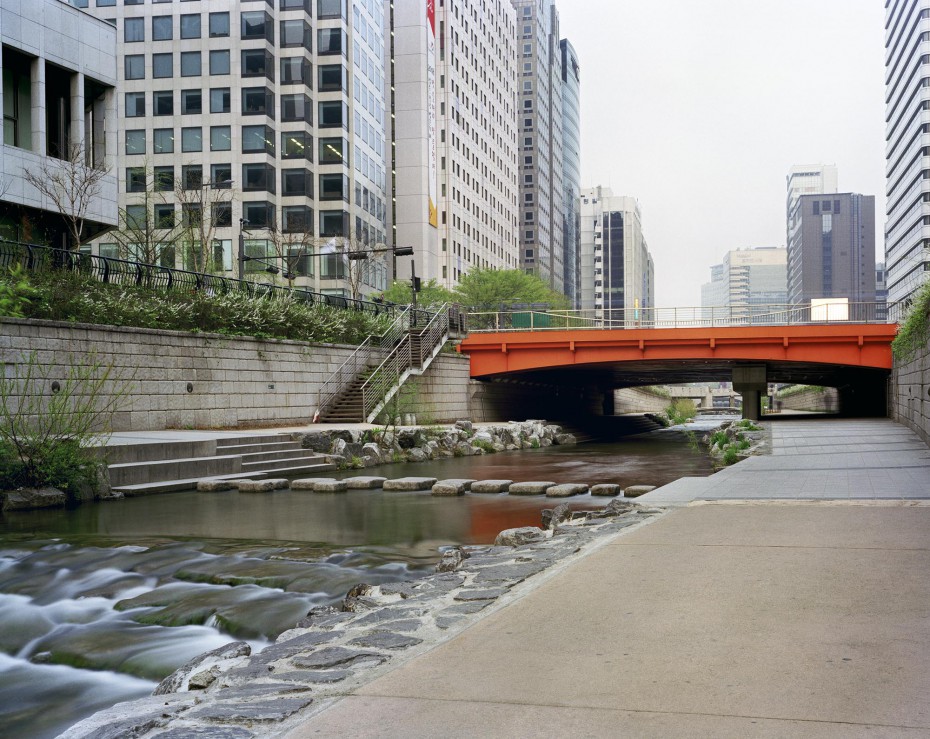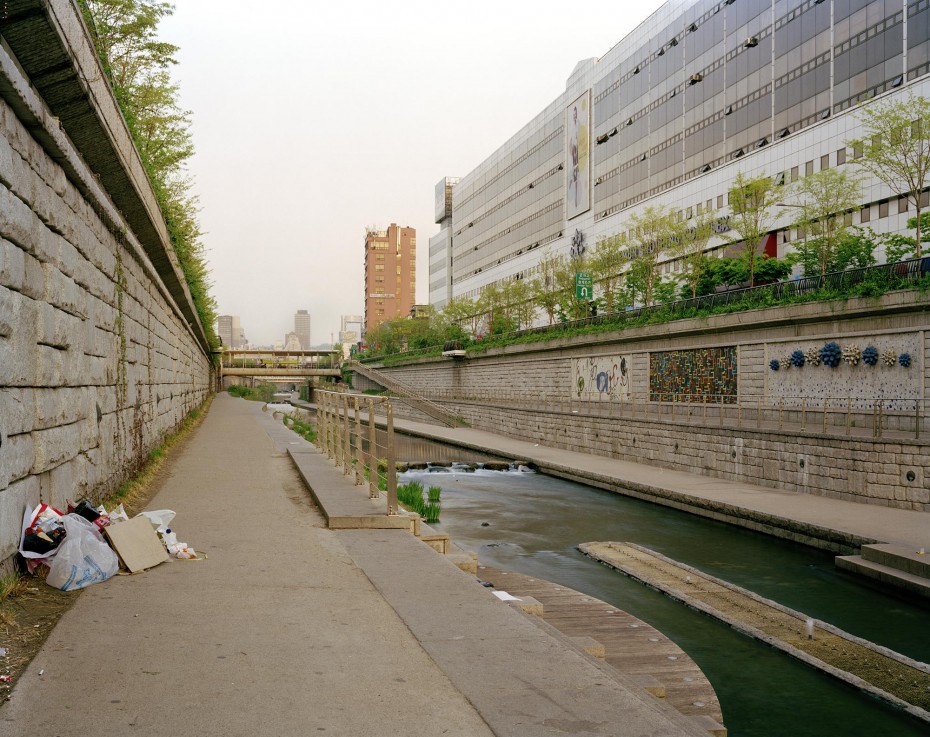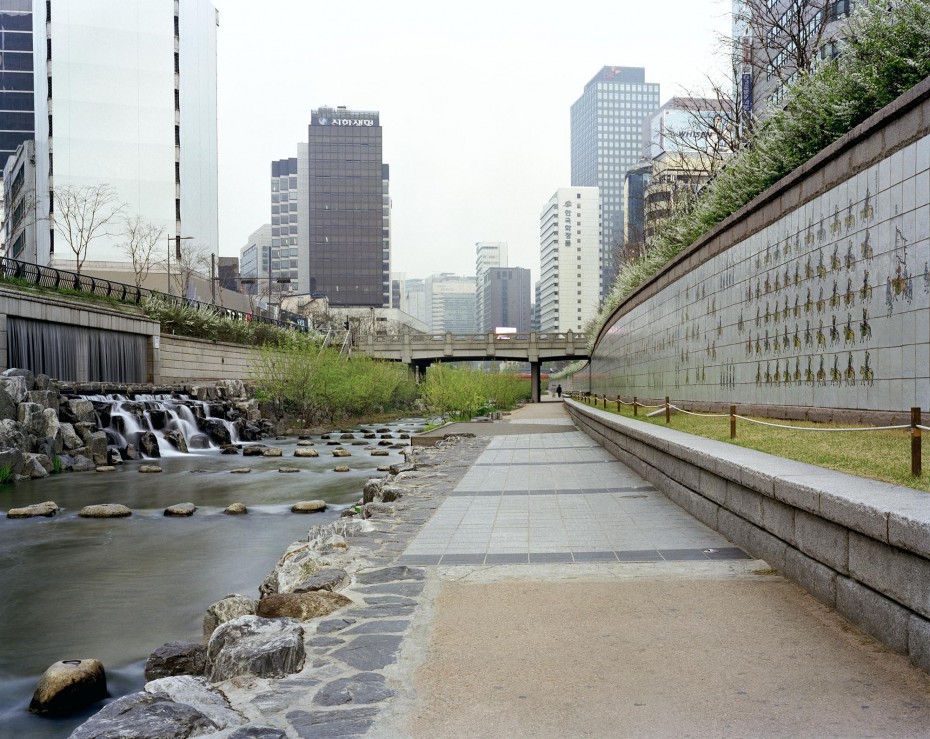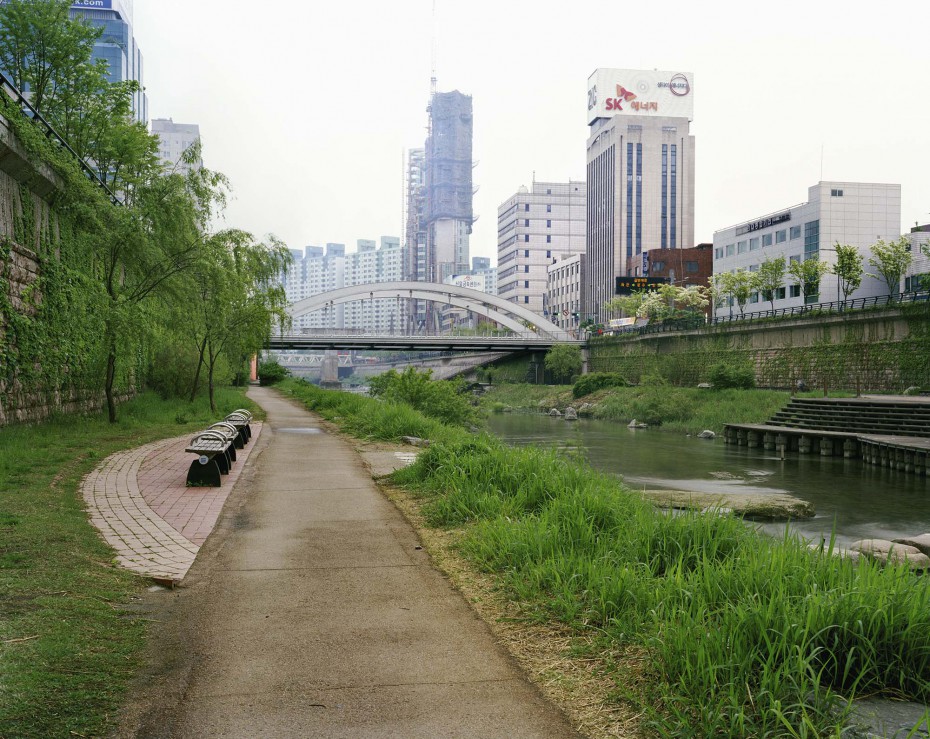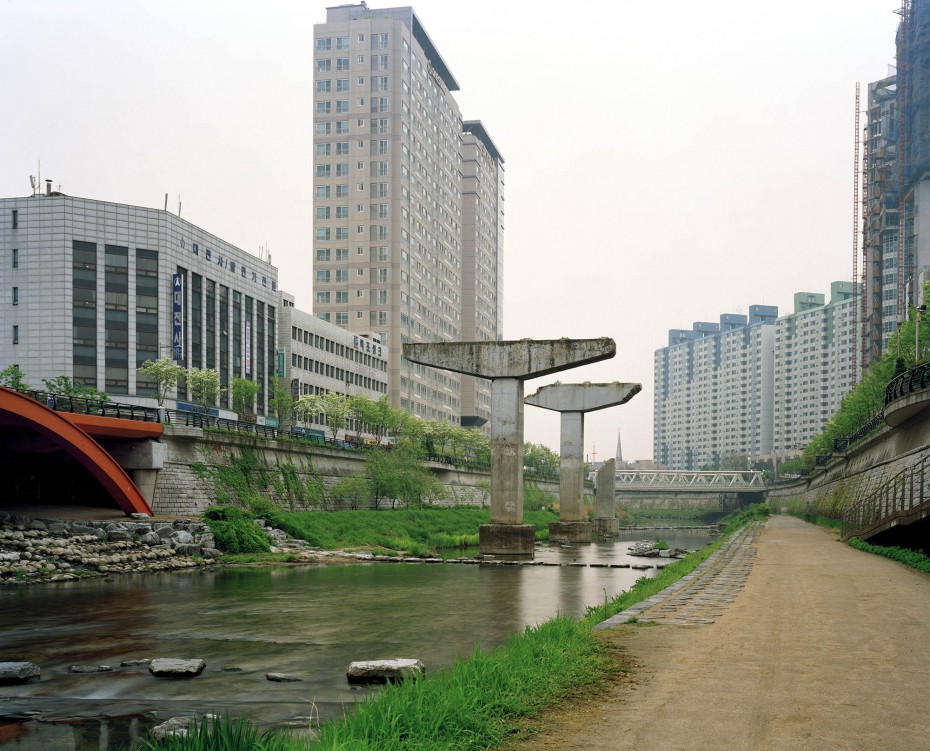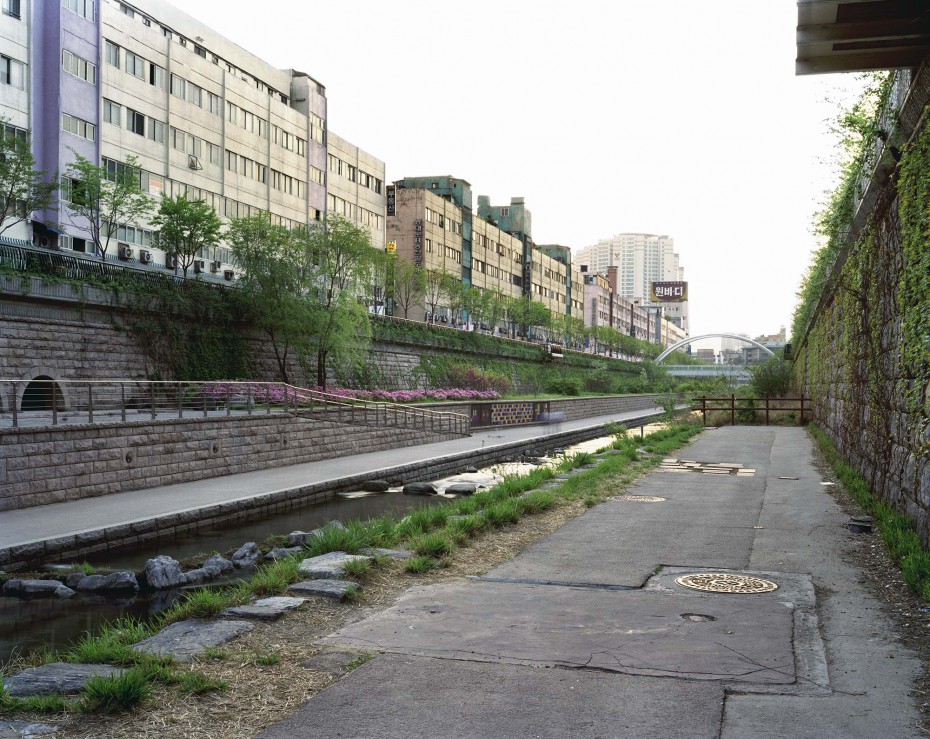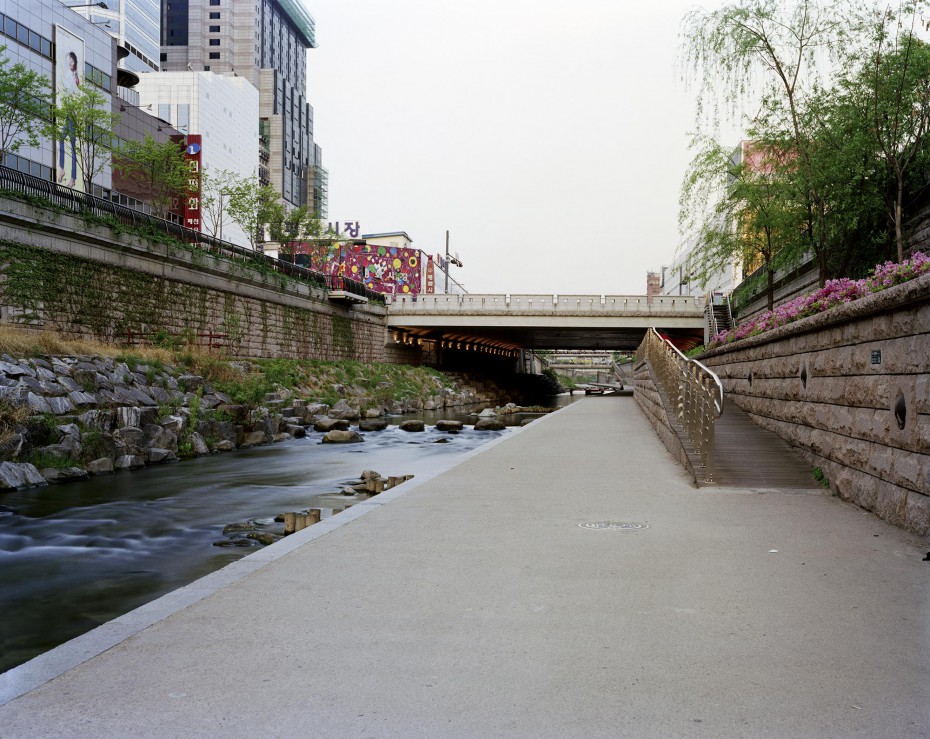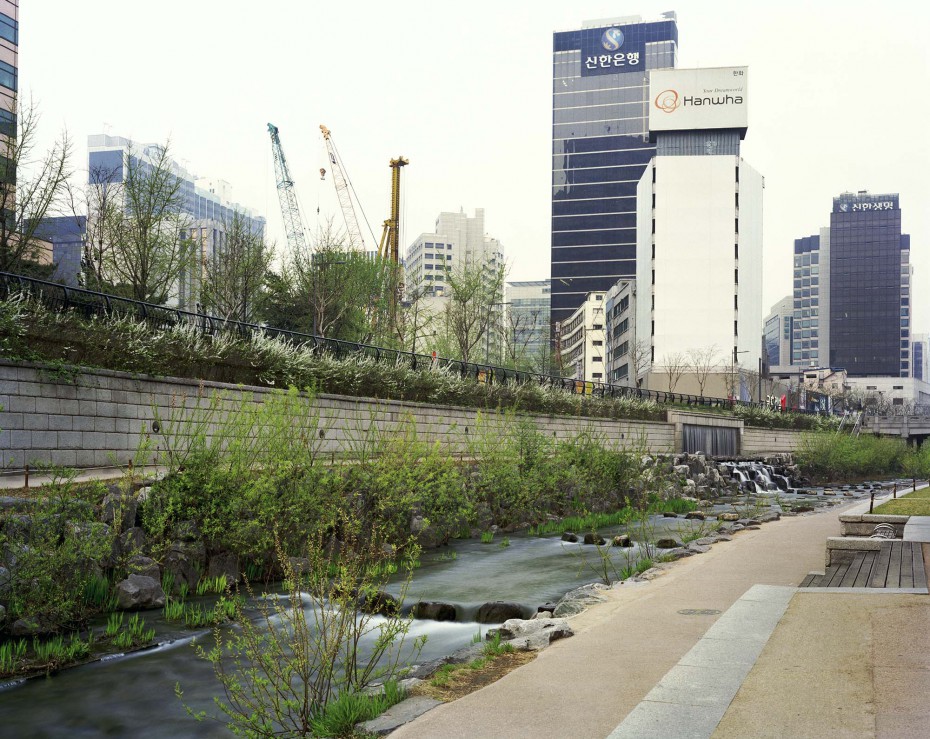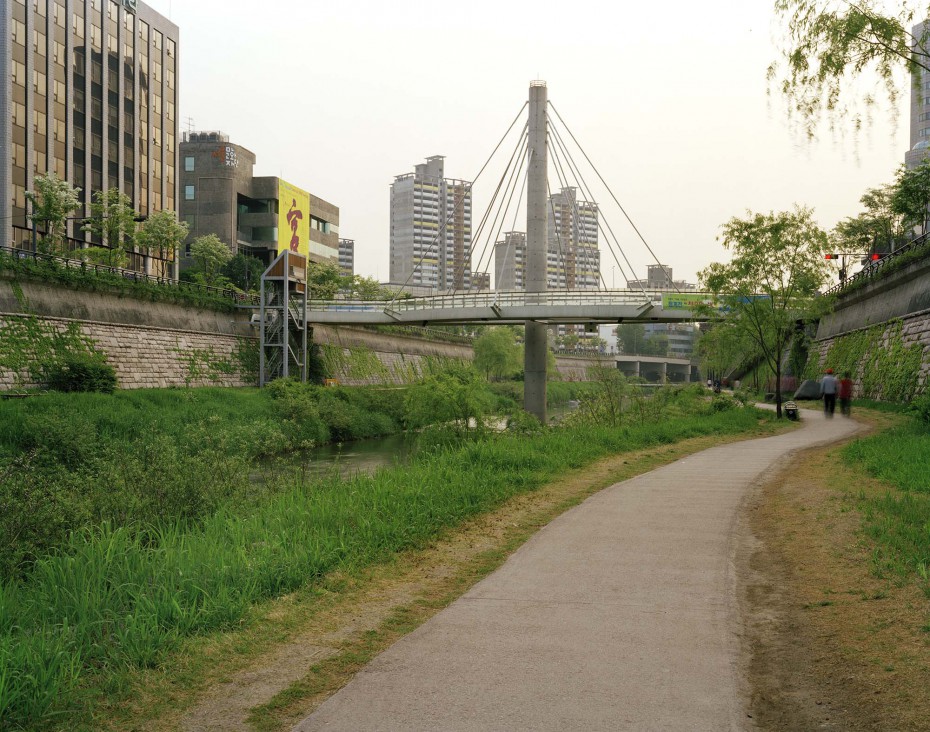Miracle on the Han River
The title of this project references the period of massive cultural, social, economic and technological development that South Korea has undergone since the Korean Civil War of the mid-twentieth century. More specifically, Miracle on the Han River is used to describe the growth of Seoul – which hosts the Han river, that runs through both North and South Korea – from a city destroyed by war to a major industrialised economic centre. The phrase itself is a recontextualisation of ‘Miracle on the Rhine’ which described the economic rebirth of the newly divided Germany after World War Two. So, like the Rhine the Han River also acts as an important metaphor as well as site for the industrial modernisation of Korea: the expression also seems to adequately pay homage to this river’s long political history.
One aspect of Seoul’s renaissance involved the redevelopment and planning of its city centre; this directly affected the Cheonggyecheon, a tributary which flows through the downtown area eventually meeting the Jungnangcheon which in turn empties into the Han River. In brief, this stream was covered over by roads, other buildings, and eventually a motorway – clear representatives of capital growth within a modern city – that in turn led to its demise. However, this area has recently undergone a major regeneration process involving pumping water back into the stream, relocating the overhead road, and developing recreational areas in the form of long parks running either side of the water flow: the newly beautified Cheonggyecheon was finished in late 2005. This area of Seoul is significant in that it is geographically representative of both traditional and contemporary aspects of Korean culture: old Joseon Dynasty palaces sit alongside generic skyscrapers housing government officials and the like. In essence, Cheonggyecheon has become a unique site clearly mingling the old with the new, politics with history, the social with economics, as well as nature with culture – infrastructure that is not clearly visible but contributes to a sense of understanding, experience and knowledge of place.
Miracle on the Han River uses this infrastructure to help frame a sustained photographic investigation into the Cheonggyecheon and surrounding city areas: these images will be executed in a similar manner to my existing practice. Accordingly, Miracle on the Han River seeks to explore the disparity between the uniquely subjective experiences of being in public sites such as Cheonggyecheon, and their representation through photography. This project also plays on the socio-cultural understanding of both site and photography – the former is linked to how photographs actually do reveal something about what they depict, while the latter is grounded in the notion that space itself is always ‘cultural’. Subsequently, what photographs disclose has more to do with the things we cannot necessarily see but are so connected to how we gather a sense and comprehension of specific sites: Miracle on the Han River establishes specific formal compositional relationships within each photograph’s content to highlight this understanding.
Such formal awareness starts to upset the usual social conventions and narrative associations of photography. Therefore, it is the little shafts of light, or the direction of the pathways that line the river, or the curves and colours of the architecture which become stilled through photographic representation, offering us something else. These aesthetic traits quite literally point to a different way of looking which in turn becomes tightly connected to our experience of such a site – Cheonggyecheon, and the Seoul city centre. So, what Miracle on the Han River reveals is the possibility and potentiality of experience; a way of being in these public sites anew, without the usual clutter dominating and clouding our understanding.
Series Information
- Year: 2008
- Dimension: all prints 1000x800mm
- Medium: Photography
